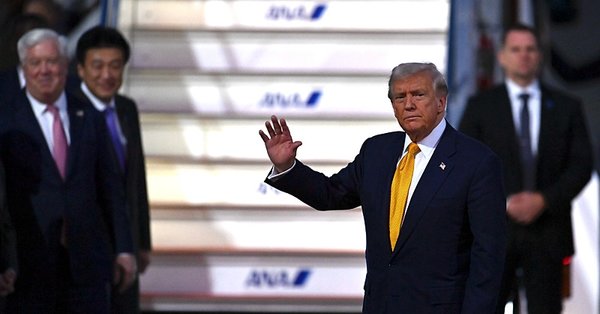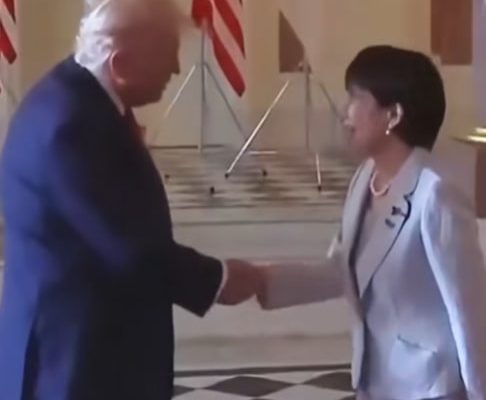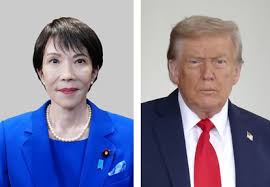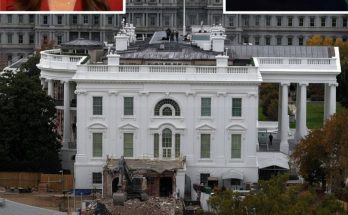It was meant to be a symbolic show of strength — a red-carpet welcome at Tokyo’s Imperial Palace marking renewed ties between Washington and Tokyo. Yet as cameras flashed and the national anthems played,
Donald Trump’s face told another story.
Observers noticed the former president walking slowly across the crimson carpet, his smile faint and fleeting. His eyes darted toward the palace steps, his brow drawn tight. For a man known for commanding attention, he appeared strangely subdued.

The atmosphere shifted further when Trump joined Prime Minister Sanae Takaichi, Japan’s first female leader, for what was scheduled to be a 30-minute bilateral meeting. According to multiple insiders quoted in Japanese outlets, that meeting stretched to nearly an hour — and not because of small talk.
Takaichi, a conservative known for her firm stance on national defense, reportedly pressed Trump on U.S. troop funding, insisting that Japan’s contributions should reflect “mutual burden, not dependence.” She even hinted that Japan might
re-evaluate parts of the post-war security agreement if Washington pushed too hard. The exchange reportedly caught Trump off guard.
For years, Trump has advocated that U.S. allies shoulder a larger share of defense costs. But facing a confident and unapologetic Japanese leader who refused to yield was new territory. Insiders said the tension was palpable; aides shifted uneasily as voices rose behind closed doors.
When the pair reappeared for photographs afterward, the difference in demeanor was striking. Takaichi stood poised and composed, her expression calm but unyielding. Trump, in contrast, appeared tense, his jaw tight, lips pressed thin — a man fighting to control frustration.

For Japan, this meeting signaled a turning point. Under Takaichi’s leadership, Tokyo is asserting itself not merely as a strategic ally, but as an equal power ready to negotiate on its own terms. For Trump, accustomed to deference from foreign counterparts, the moment may have been a humbling one.
While official statements described the encounter as “productive” and “cordial,” the footage told a subtler truth. Behind the ceremonial bows and diplomatic smiles, it was clear: this was not the old U.S.–Japan dynamic. It was the birth of a new, more balanced — and perhaps more challenging — partnership.



